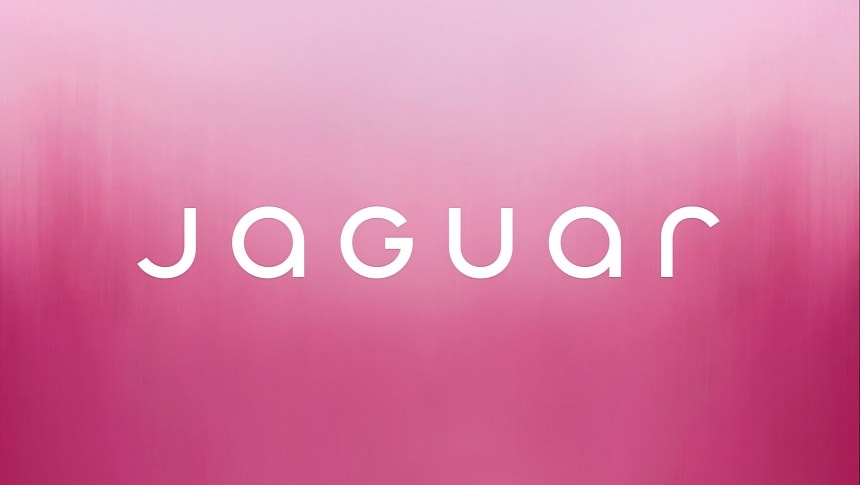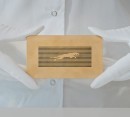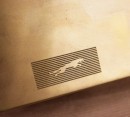What did you expect? Honestly, think about Jaguar's controversial recent rebrand, and ask yourself how it could've gone any differently. For a brand so hopelessly tied to the ways of the old school, one that's been defined for so long by brutish exteriors with burley engines to match, finding their way in the electric world of the future was going to bring some changes.
But when Jaguar unveiled their all-new brand image, complete with a new company logo and emblem, it was hard to tell if even they knew the impact their decisions had already made on the brand. Social media posts bemoaning the minimalist Silicone Valley-inspired design language as bland, tackey, out of touch, and downright silly became low-hanging fruit online. Of course, changing any aspect of Jaguar's public image after 90 years on a similar trajectory was going to spark knee-jerk reactions no matter what the details were.
But even with those expectations, a bold PR move on the part of Jaguar is rapidly becoming crisis PR. But is this warranted? Are people justified in dragging Jaguar through the mud via social media? Well, Elon Musk is stopping by to poke fun at Jag on their recent X posts, with comments below calling to boycott the brand. It's clear where the public stands. But to understand why Jaguar bothered at all changing its brand image this radically, it's important to understand where it stands as a company in 2024.
It's been 11 years since Jaguar Cars merged into the Indian Tata Motors-owned Jaguar Land Rover consortium, commonly shortened to JLR. It's enough time for the first round of vehicles that JLR rolled out to start to get long in the tooth. The XE sedan, in production since 2015, the larger XF produced for the same amount of time, and the F-Type sports car built since 2013 all saw their production sunset in 2024. Even ostensibly "fresher" models like the E-Pace crossover and the I-Pace electric SUV are slated to bite the dust before the year is out.
Only the F-Pace large crossover SUV has thus far been spared from the chopping block, at least officially. But it's clear that Jaguar is slowly but surely prepping themselves for a world where battery EVs have already been christened the way of the future. Could a brand that, as we've already mentioned, is so tied to styling cues that stretch back to just after World War I possibly back up the looks when the electric drivetrains don't deliver anywhere near a similar experience?
Simply put, if Jaguar continued styling cars and SUVs as they have for decades, but the average Jag enjoyer wretches at the sight of what powers it, they'd simply not buy Jags anymore. If they must drive a new car, they'd opt for BMWs, Audis, and Teslas instead, or they'd keep driving used Jags until the wheels fell off out of protest. Just look what happened when Dodge unveiled the electric Charger Daytona SRT concept a couple of years ago.
Feedback from the Mopar faithful, when the prototype for the next-gen Charger made its debut without an ICE motor option was so negative that a variant sporting a Hurricane straight-six, only barely managed to keep interest. Of course, the Hurricane was likely a planned addition to the Charger lineup well before it made its public debut. But the suspect timing of its anouncement right as ant-EV sentiment for the Charger was at its peak sure did raise some eyebrows. Jaguar can't retcon their entire future lineup to feature some ICE engine in that fashion just to keep the peace. So rather than try to change their future electric fleet at the last minute, Jaguar opted to change their branding to better fit the essence of what the moniker wants to be in the future to come, not what it was in the past.
Even so, none of this comforts people who find Jaguar's new branding to be tacky, overly minimalistic tech-bro nonsense that blatantly tries to copy Tesla and other EV brands rather than forge an entirely new identity all its own. Tesla themselves borrowed much of their styling cues, and even some of their business practices from Steve Jobs' Apple, which tells you how original most the ideas coming out of the auto industry are. But if you ask us, this shouldn't be the end of the line for Jaguar.
Let's assume, just for the moment, that the old Jaguar as we once knew it is dead, and Jaguar has to redefine itself as a brand from an engineering perspective as well. In this case, if big V8s and Bond Villian-esque styling are out of the question, let's see what Jag can do to separate itself as an EV brand from Tesla, Rivian, and all the other companies building practically identical vehicles at the moment.
Can they offer some novel refinement in battery range, passenger comfort, or driving experience that other brands are envious of? Can they be so refined and luxurious that they form a reputation as a "Bentley without the B" of sorts as it once was in the latter half of the 20th century? If there's any angle whatsoever Jaguar could take to diversify their future fleets of EVs, they better exploit it in due haste or be buried under a hoard of Tesla copiers as well as Tesla themselves.
Make no mistake; this does not have to be a death sentence for Jaguar. It can be an opportunity to ensure that one of the UK's most historic and beloved automakers doesn't fade with the electric revolution. It's all in Jaguar's hands now, and that means it's up to their designers and engineers to see them through. We think it goes without saying that we should at least give them a fighting chance before condemning the change in branding as a complete waste of time.
One thing's for sure, the future of the Jaguar brand is set to look remarkably different from anything we're familiar with. But what do you folks out there think? Is Jaguar forward-thinking regarding their current rebrand? Or does it make you want to never so much as look in the direction of a Jag dealership again? Let us know in the comments down below.
But even with those expectations, a bold PR move on the part of Jaguar is rapidly becoming crisis PR. But is this warranted? Are people justified in dragging Jaguar through the mud via social media? Well, Elon Musk is stopping by to poke fun at Jag on their recent X posts, with comments below calling to boycott the brand. It's clear where the public stands. But to understand why Jaguar bothered at all changing its brand image this radically, it's important to understand where it stands as a company in 2024.
It's been 11 years since Jaguar Cars merged into the Indian Tata Motors-owned Jaguar Land Rover consortium, commonly shortened to JLR. It's enough time for the first round of vehicles that JLR rolled out to start to get long in the tooth. The XE sedan, in production since 2015, the larger XF produced for the same amount of time, and the F-Type sports car built since 2013 all saw their production sunset in 2024. Even ostensibly "fresher" models like the E-Pace crossover and the I-Pace electric SUV are slated to bite the dust before the year is out.
Only the F-Pace large crossover SUV has thus far been spared from the chopping block, at least officially. But it's clear that Jaguar is slowly but surely prepping themselves for a world where battery EVs have already been christened the way of the future. Could a brand that, as we've already mentioned, is so tied to styling cues that stretch back to just after World War I possibly back up the looks when the electric drivetrains don't deliver anywhere near a similar experience?
Feedback from the Mopar faithful, when the prototype for the next-gen Charger made its debut without an ICE motor option was so negative that a variant sporting a Hurricane straight-six, only barely managed to keep interest. Of course, the Hurricane was likely a planned addition to the Charger lineup well before it made its public debut. But the suspect timing of its anouncement right as ant-EV sentiment for the Charger was at its peak sure did raise some eyebrows. Jaguar can't retcon their entire future lineup to feature some ICE engine in that fashion just to keep the peace. So rather than try to change their future electric fleet at the last minute, Jaguar opted to change their branding to better fit the essence of what the moniker wants to be in the future to come, not what it was in the past.
Even so, none of this comforts people who find Jaguar's new branding to be tacky, overly minimalistic tech-bro nonsense that blatantly tries to copy Tesla and other EV brands rather than forge an entirely new identity all its own. Tesla themselves borrowed much of their styling cues, and even some of their business practices from Steve Jobs' Apple, which tells you how original most the ideas coming out of the auto industry are. But if you ask us, this shouldn't be the end of the line for Jaguar.
Let's assume, just for the moment, that the old Jaguar as we once knew it is dead, and Jaguar has to redefine itself as a brand from an engineering perspective as well. In this case, if big V8s and Bond Villian-esque styling are out of the question, let's see what Jag can do to separate itself as an EV brand from Tesla, Rivian, and all the other companies building practically identical vehicles at the moment.
Can they offer some novel refinement in battery range, passenger comfort, or driving experience that other brands are envious of? Can they be so refined and luxurious that they form a reputation as a "Bentley without the B" of sorts as it once was in the latter half of the 20th century? If there's any angle whatsoever Jaguar could take to diversify their future fleets of EVs, they better exploit it in due haste or be buried under a hoard of Tesla copiers as well as Tesla themselves.
Make no mistake; this does not have to be a death sentence for Jaguar. It can be an opportunity to ensure that one of the UK's most historic and beloved automakers doesn't fade with the electric revolution. It's all in Jaguar's hands now, and that means it's up to their designers and engineers to see them through. We think it goes without saying that we should at least give them a fighting chance before condemning the change in branding as a complete waste of time.
One thing's for sure, the future of the Jaguar brand is set to look remarkably different from anything we're familiar with. But what do you folks out there think? Is Jaguar forward-thinking regarding their current rebrand? Or does it make you want to never so much as look in the direction of a Jag dealership again? Let us know in the comments down below.


















